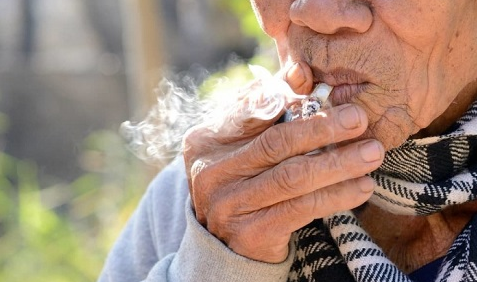Medical Marijuana Effectively Relieves Chronic Pain from Age-Related Diseases
According to statistics, the main demographic group of legal medical marijuana users in the United States is the Baby Boomer generation—people aged 50 and older. Each year, the number of users in this age group continues to grow. The reason for the increasing popularity of medical marijuana among seniors is simple: as reforms progress, older adults are paying more attention to the wealth of information highlighting the effectiveness of medical marijuana in treating symptoms of age-related diseases, such as chronic pain and muscle spasticity.
New York Study Shows High Effectiveness for Chronic Pain
Recently, a group of researchers from New York published a study demonstrating the high effectiveness of medical marijuana in treating chronic pain and other symptoms associated with age-related illnesses. The experiment involved 200 patients aged 75 and older. The results showed that even small amounts of medical marijuana not only suppressed pain attacks but also helped patients reduce or eliminate their use of opioid painkillers in favor of a safer alternative.
THC and CBD Combination Reduces Pain from Age-Related Conditions
The project was led by Dr. Laszlo Mechtler, head of the Dent Neurologic Institute in Amherst, New York, and chief of neuro-oncology at the Roswell Park Cancer Institute. In an interview with the Tribune, Dr. Mechtler summarized the findings: “The vast majority of patients personally confirmed that medical marijuana significantly improved their overall well-being.”
At least half of the 200 volunteers reported to doctors at the end of the experiment that they felt less chronic pain thanks to medical marijuana. Additionally, 18% said their sleep quality improved, 15% noted that even a single use of marijuana reduced nerve pain, and 10% reported a significant decrease in nervousness and aggression. Overall, about one in seven patients said that medical marijuana, in some form, improved their general condition.
Of the patients studied, 75% were diagnosed with age-related diseases accompanied by chronic pain and muscle spasticity. The remaining 25% suffered from severe chronic illnesses, ranging from various forms of epilepsy to cancer, also accompanied by similar symptoms.
During the experiment, researchers monitored the effects of THC on patients’ well-being and perception. As expected, about a third of participants experienced noticeable side effects, such as fatigue and increased drowsiness, during the first days of the trial. However, after adjusting the cannabinoid dosage—specifically by balancing the ratio of THC with CBD—these effects persisted in only 21% of participants. In the end, only 3% of participants left the study early due to ongoing side effects from cannabinoids.
Dr. Mechtler noted that the method of marijuana consumption did not significantly affect the plant’s therapeutic effects. However, patients who used THC and CBD in equal proportions reported a stronger therapeutic effect without noticeable negative side effects.
New Evidence for Replacing Opioid Painkillers with Medical Marijuana
At the conclusion of the experiment, the researchers discovered another interesting aspect of using medical marijuana for age-related diseases: in addition to reducing nervousness and limb pain, many volunteers were able to reduce or completely stop using opioid painkillers.
“In other words, we have further confirmation of what many scientists already know: medical marijuana can effectively replace much more dangerous substances, such as medical opiates,” said Dr. Mechtler. “Perhaps studies like this will finally convince federal and state authorities that we already have a tool to fight the so-called ‘opioid crisis,’ which claims the lives of 115 Americans every day.”
“Unlike so-called ‘opioid medications,’ I have never heard of anyone dying from a marijuana overdose,” he added.
Of course, it’s important to note that the study’s results have not yet been reviewed and verified by the medical community. Dr. Mechtler plans to present his findings at the upcoming American Academy of Neurology conference in Philadelphia at the end of the month.



